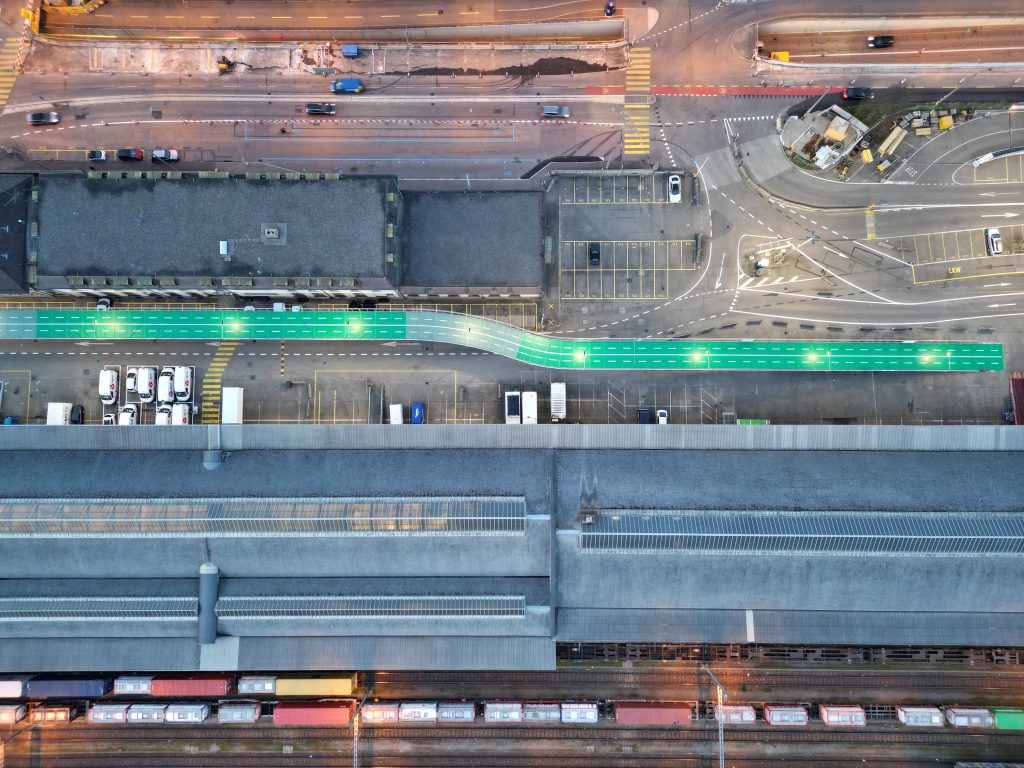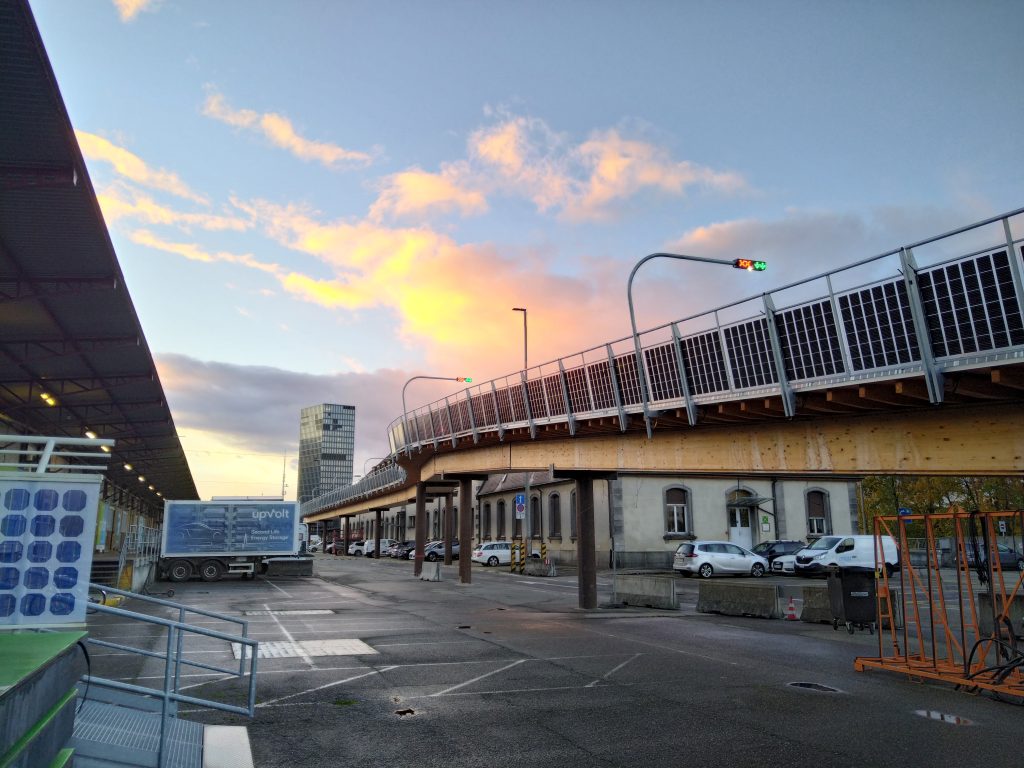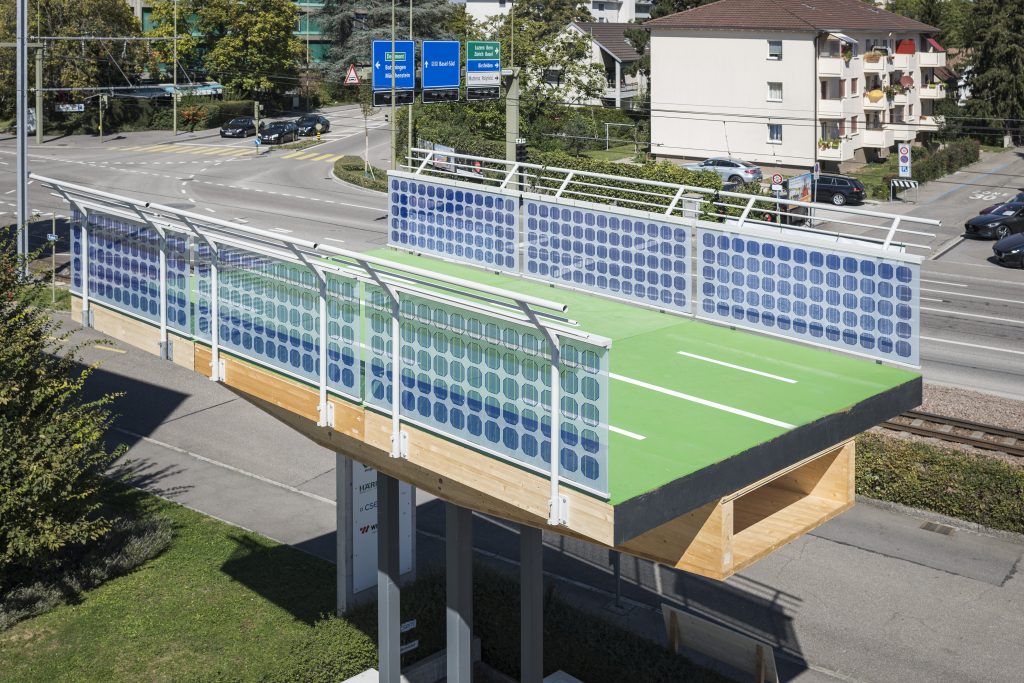Swiss start-up Urb-X has developed an elevated highway, offering a direct route for active cyclists over longer distances.
Designed to complement what currently exists on-the-ground, the cycle highway aims to extend cycling infrastructure from the city centre towards the periphery to encourage people to travel longer distances by bike instead of car.
“We started with a vision to create a highway – but not for cars,” Urb-X Founder and COO Bálint Csontos tells Zag Daily. “To do that, we need the highest quality cycle infrastructure.”
With a 200-metre test track completed in Basel, Switzerland, Urb-X is in discussions with potential European clients and hopes to bring the track to life within the next two years.

Riding the track
Elevated five metres above the ground, Urb-X’s test track is the showcase example of a cycle highway which avoids obstacles and reduces threats to the rider.
“The track is as much about separation from the main highway as it is about giving cyclists a direct route that avoids conflict,” Bálint says.
“This unlocks the potential for cyclists to travel further distances at fast speeds. Whereas before they may have travelled, say, seven kilometres, maybe now they’ll travel 12.”
Integrated with pavement heating, the track has a non-slip surface even at freezing temperatures, which offers high traction and reduces the risk of fall.
Sensors in the track also allow for intelligent lighting, traffic management and predictive maintenance.
To keep the infrastructure climate neutral, it is designed to produce up to 10 times more energy than it consumes with solar cells installed in the track’s railing.

Its modular nature gives clients full control when choosing what they want to see in their city’s cycle highway. From the length and course of the track, to the distance between, or the height of the pillars, clients such as city authorities and planning offices decide almost everything. The modularity also allows for the industrial pre-production of system elements to reduce the costs of the highway.
However, one thing clients can’t change is what the Urb-X cycle highway is made from.
Before they even started the project, Bálint and his team knew that timber would compose more than 90% of the construction. Over 95% is made from recyclable materials and the construction of an Urb-X cycle highway saves approximately 3,000 tonnes of CO2 when compared with traditional methods such as using steel or concrete.
Weighing five times less than concrete, a timber construction also benefits from lighter foundations and less material, making it a more sustainable and affordable option.
Furthermore, using wood as the primary source in construction means it can be sourced regionally and contributes to fewer transport costs as circuits are shortened.
The planning process
When planning cycle highways cities have been trying to give cyclists a direct route for a long time.
“You start with finding a direct line from point A to point B,” Bálint says. “And then there’s so many hurdles you have to get past, and you go on and on, taking compromise after compromise, until you don’t have a direct route anymore.
“That’s the process of planning. You start with a vision and then you collide with reality.”
This reality is what enabled Urb-X to realise the possibilities of an elevated highway and present them as a solution – a medium for sustainable transport that can avoid physical infrastructure completely.

Having said that, elevation may not be necessary in every single city. Instead, the highway could be used on the ground as an extension of existing infrastructure such as embankments.
“This cycle highway is not designed to replace the infrastructure on the ground, but to complement it.”
Handing over to the city once again, it is up to the relevant authorities and planning offices to determine how to incorporate an Urb-X highway most efficiently into their city.
Though Urb-X is primarily in discussions with Central European clients, Bálint does not rule out international expansion.
“Every city could benefit from kilometres in this form.”





